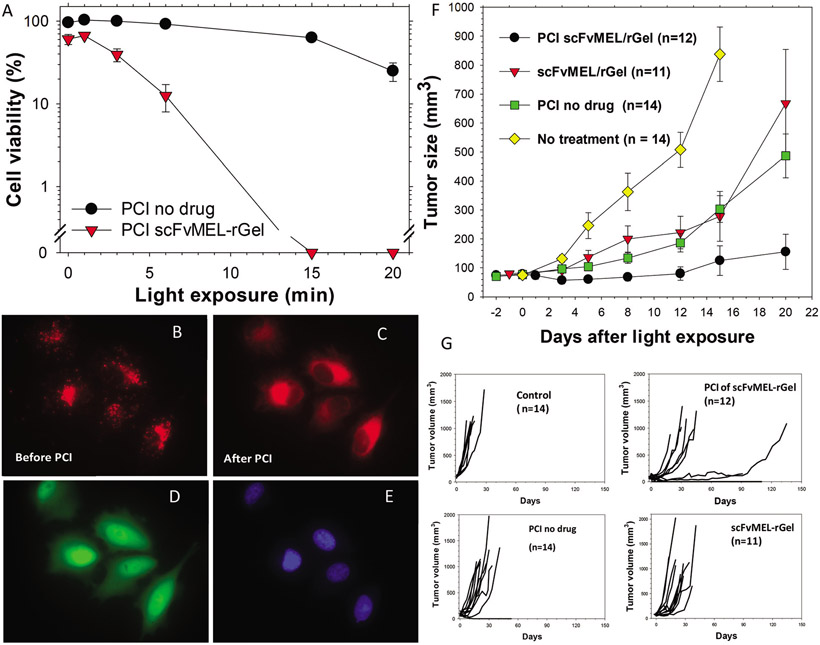Fig. 5.
Potent in vitro and in vivo effects of the CSPG4-targeting recombinant immunotoxin scFvMEL-rGel. (A) A-375GFP cells were incubated with the PCI-photosensitizer AlPcS2a without (PCI no drug) or with 100 nM scFvMEL-rGel for 18 h and subsequently washed and incubated in drug-free medium for 4 h prior to red broad band light (γmax around 670 nm) exposure. Cytotoxic responses were examined by the MTT assay 72 h post light (data are based on one representative experiment out of five independent experiments (the other 4 experiments are presented in ESI-8†)). Error bars are SD of triplets. (B) A-375 cells with granular (AlPcS2a (red) fluorescence prior to 30 s. microscopy light (650–690 nm) exposure and C) 5 min after PCI-induced cytosolic release of photosensitizer. (D) GFP- and (E) Hoechst 33342 signal. (F) Strong delay of A-375 tumour growth after only one session with PCI of scFvMEL-rGel. These data are extracted from a Kaplan–Meier plot published previously Selbo PK et al. in PLoS One, 4(8), e6691. Athymic nude mice with subcutaneously growing A-375 tumours (approximately 75 mm3) were given AlPcS2a (5 mg kg−1 i.p. 48 h before laser exposure) and scFvMEL-rGel (2 mg kg−1 i.v, 24 h before laser exposure). Laser wavelength: 670 nm, Irradiance: 100 mW cm−2, Light dose: 20 J cm−2. n, number of animals in each group. (G) Individual tumour growth curves over time. The flat line up to day 110 in the PCI of the scFvMEL-rGel group represents 4 mice with complete tumour responses (33%). In the same group, one mouse had a tumour that started to grow slowly at day 100. Another PCI-treated mouse where the tumour size was reduced by 65%, gained a slow tumour growth between day 60 and 90, but had to be sacrificed due to a nose infection. The number of long time survivors (animals with tumours less than 800 mm3 at day 90) was n = 6 (50%) in the PCI group.

